Morality in the pigsty
What should a farmer do when people demand more animal welfare - but nobody wants to pay for it? A visit to a high-tech fattening farm.
An article from ZEIT No. 14/2024 - by Ruth Fend
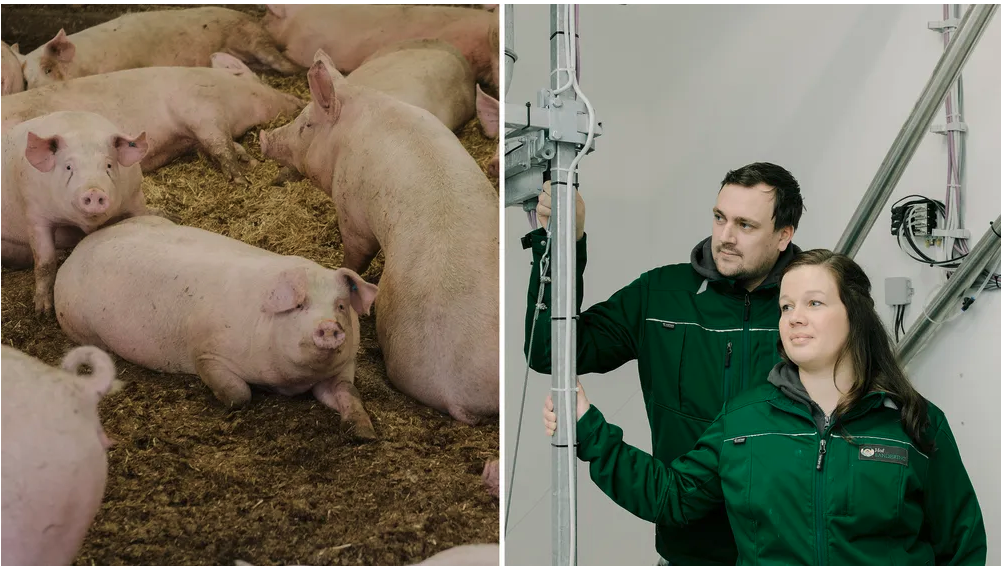
A gray day in the northwest of Lower Saxony, an hour north of Osnabrück. The clouds are reflected in the puddles of water in the fields. In front of Dirk and Anne Sandering's farm is a historic windmill without blades, with a modern wind turbine turning behind it. It's quiet, only the pigsty is busy: three young men are trying to separate the larger animals from the group and herd them into a corridor. Some of them screech and squeal. "We're getting them ready for transportation tonight," says Dirk Sandering. "We do this during the day so that the barn is quiet at night."
Resting the animals at night helps them. Sandering also ensures that they are as comfortable as possible during the 100 days they spend in his barn. "Do well": The private animal welfare initiative initially developed criteria for what this means. Since last year, pigs have also been subject to the government's husbandry label with five levels. The biggest leap is from level two to three.
To reach level three, pig farmer Dirk Sandering has built a high-tech barn. Robots move on rails on the ceiling, letting straw trickle down every day. When the pigs dig in it, they are kept busy. They don't nibble each other's tails. One side of the barn is completely open from chest height, allowing daylight and fresh air to penetrate - outdoor climate stimuli in the criteria catalog. This is also a must for level three. Each pig must have at least 1.05 square meters of space, at Sandering they even get 1.3 square meters, almost twice as much as the legal minimum standard of 0.7 square meters.
Dirk Sandering, 32 years old and father of two, has invested a mid-single-digit million sum in the conversion of his stables. There were no state subsidies. He has taken a huge entrepreneurial risk - without knowing whether it will ever pay off. Nor is it possible to say how many farmers have taken the same path as him. Many pigs that have access to the outdoors or are kept according to organic guidelines come from smaller farms in Bavaria. High-tech animal welfare stables are more suitable for large farms, such as those found in Lower Saxony. There are probably only a handful.
Like Sandering, many livestock farmers are faced with a dilemma: morality is easier demanded than paid for. Nine out of ten consumers are in favor of better standards in animal husbandry, according to a survey by the European Consumer Organization BEUC. And seven out of ten say they are willing to pay higher prices for this. But in reality, the vast majority of people buy the cheapest. Pork from rearing stage three only had a market share of eight percent in 2022. How should a pig farmer behave?
Anyone visiting Dirk and Anne Sandering in their home enters a reception room with a long wooden table. The slogans on the walls could also be hanging in a start-up office in Berlin-Mitte. "Success has 3 letters: DO" is written on one poster. On another, the words "Should have, should have, could have, should have" are crossed out, underneath, without a line: "Do". Sandering only took part in the farmers' protests in January for one day, but now, he says, it's time to take a break. "I can talk a lot. But if I don't do anything, nothing will come of it."
The Sandering family has been doing a lot for a long time. In 1952, Dirk Sandering's grandparents' farm consisted of 40 hectares of land, ten cows and ten breeding sows. At the beginning of the seventies, it grew bigger and bigger, and now bulls were also fattened there. In the mid-nineties, his father went into wind power and in 2008 into photovoltaics. Today, the grandson grows potatoes and cereals on around 800 hectares and keeps 4,500 pigs. Dirk Sandering calls the sustainable stables, which will be completed in August 2023, the farm's largest construction project. "With everything we have done in the last five years, we are talking about an overall concept."
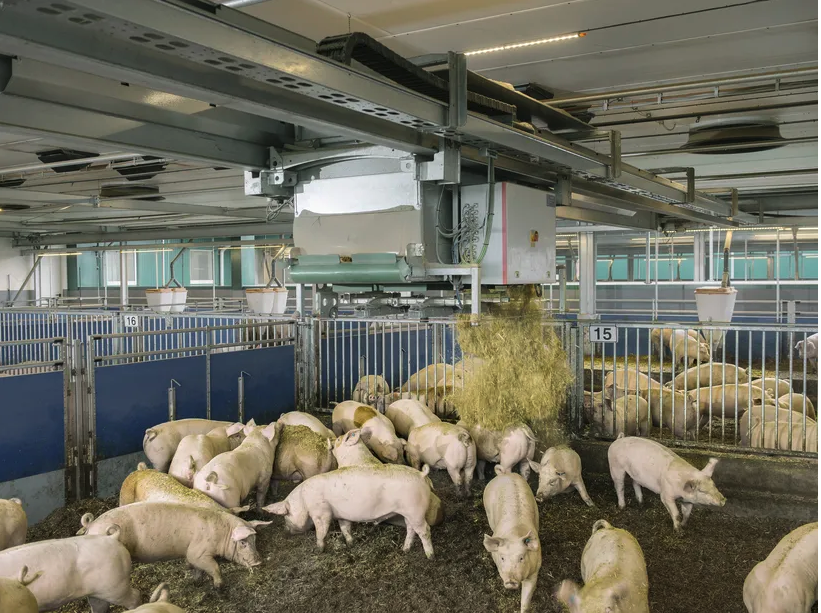
Contrary to popular notions of small farm idylls, for him this involves size. If he builds an additional barn, then not one as we know it, says Sandering. But a future-oriented one. Housing level three. For level four, the pigs would need free range, but that's not possible, he says - his farm is too close to the housing estate. The emissions law here prohibits pigs running around outside, animal welfare or not.
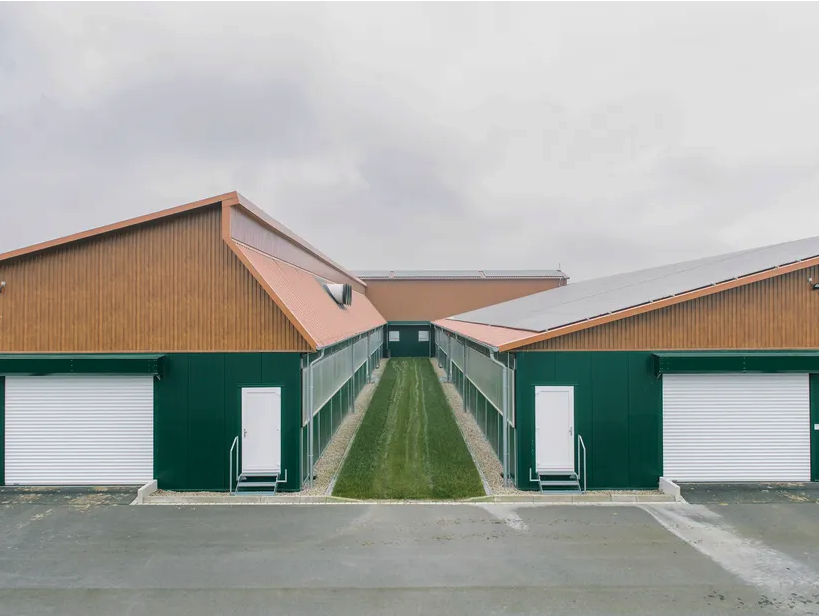
Sandering held his first talks in 2019, shortly after which the pig industry was hit by its worst crisis yet. First, slaughterhouses were plagued by high infection rates during the Covid pandemic. When they had to close temporarily as a result, the fatteners could no longer get rid of their pigs. This was followed by the outbreak of African swine fever in eastern Germany in 2020. China, an important export market for local farms, banned the import of meat from Germany. The price for a kilo of slaughtered pigs drops to 1.20 euros. For Sandering, the first question was: "How do I get rid of what I produce and how do I find piglets?"
Fortunately, he finds a regional partner who offers him the planning security he was hoping for: The Goldschmaus Group, number six among slaughterers in this country, specializes in a completely regional value chain and has founded the quality meat programme "Die Marke der Bauern". It offers Sandering a five-year contract for pigs from stage three, on terms that he calls "acceptable and economical". He receives at least two euros plus a fixed premium for a kilo of slaughter pigs. For the piglets he buys, he also pays a minimum amount plus an animal welfare surcharge. "That was the starting signal for me to say: Okay, you've got the security, now the question is how you build and design it."
When he saw a pilot plant with a robot-operated straw barn in Schleswig-Holstein, he was immediately impressed. The problem with the straw is that it is much more work than the slatted floors on which most of the pigs stand on their hooves. "Staff don't just fall from the sky here either," says Sandering. Just ten people work full-time on the farm. During an entire fattening cycle of three months, this additional work is done by the bedding robot. "The straw stays in for as long as the pigs. The mat grows with the pigs, it is constantly sprinkled on top," explains Sandering. Once a load of pigs is out of their pen, the manure is taken out, first stored on the manure heap and then fermented in a biogas plant.
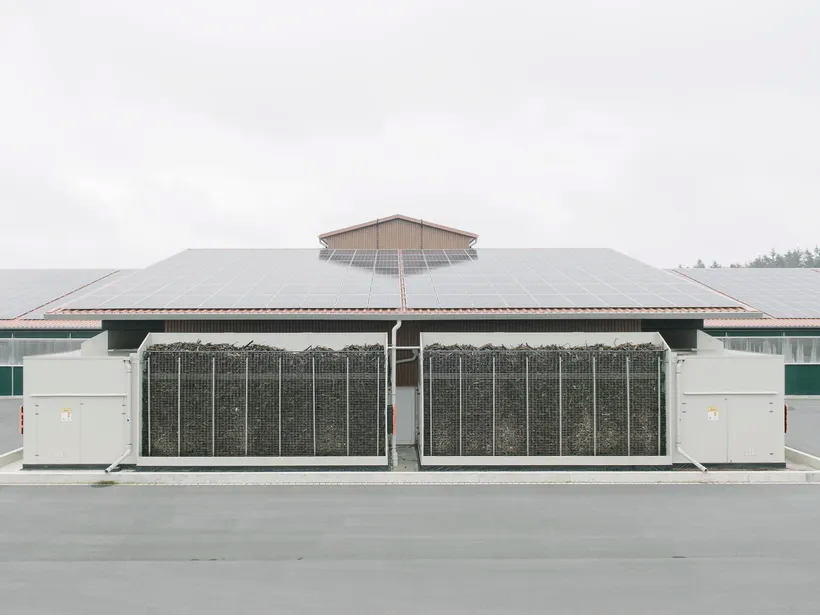
Energy is an important part of the overall concept. If the pigs have more space below, larger roof areas for solar modules are created on top of the barn roof. Sandering opts for fully south-facing monopitch roofs and buys a storage battery the size of a container. He now covers 60 to 65 percent of his annual energy requirement of 850,000 kilowatt hours with photovoltaics. The potatoes alone, which are stored in a hall, require electricity: because they start to sweat in the pile, they have to be constantly ventilated by large fans in the floor.
Before he builds the new pigsty, Sandering seeks discussions with neighbors and animal welfare associations early on. "Everyone said what Sandering was doing would be met with objections and protests." But none of that happened. "Even the authorities were gobsmacked." Today, many school classes and research institutes visit him, watch the pigs through the glass window in the visitor room and read on the information boards how the circular economy works on the farm. "It wasn't easy, and we invested a lot of time and gray hair. But at the end of the day, we reached our goal," says Sandering with satisfaction.
That could be the end of the story, but it's not quite that easy. Only just over half of his 4,500 pigs are in the new barn, which is level three. The old barn is still there too, close to the wind turbine. On request, Sandering drives there by car.
The old barn has no visitors' area. While there was hardly any smell around the animal welfare barn (the odors are extracted by a filter system), here a cloud of ammonia hits you like a club. "Of course, this is now the complete opposite," says Sandering. Only pale light penetrates through small closed windows with frosted glass panes. The pigs stand on smeared slatted floors, their tails are docked stubs. Housing level two.
Of course he feels better with the other pigs, says Sandering. He would also immediately upgrade the old barn to level three "if I had planning security from the politicians". At the moment, he is earning well with the straw pigs, even slightly better than with the conventionally reared animals - the pig price on the free market is also at a high level again at 2.15 euros per kilo. But he doesn't know what will happen after the five-year contract.
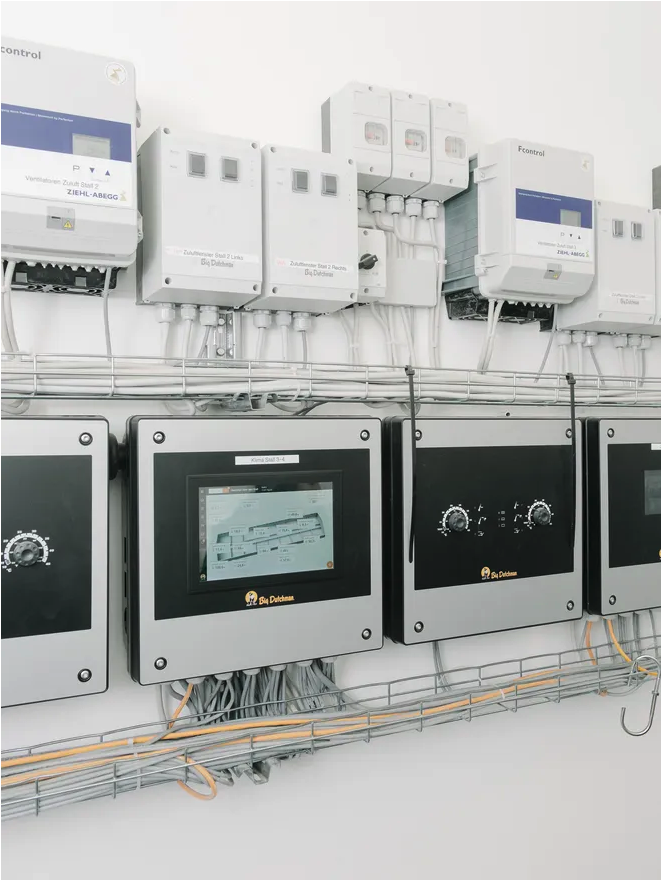
A new government aid program was launched on 1 March. One billion euros will now be made available over several years to support pig barn conversions and the resulting costs on the farm. However, the Borchert Commission, which developed concepts for the conversion of animal husbandry during the grand coalition, assumed that 3.6 billion would be needed annually from 2040 - for all types of livestock.
And the Borchert recommendations are from 2020, i.e. from a time with lower interest rates. Dirk Sandering also only had to pay between one and two percent interest on his loans, whereas today it would be closer to three to four percent. "I wouldn't have built the barn just for myself in the current market situation," he says. In view of the high level of investment, he considers subsidies to be necessary for at least ten years. The new program initially envisages a maximum of seven.
In addition to politics, Sandering also believes that consumers and retailers will ultimately decide whether farmers with demanding husbandry conditions have any prospects in Germany.
Vegetarians and vegans are not the biggest problem for him, even if he gets upset when daycare centers set up meat-free days and teachers persuade the children to eat the animals. animalshave it bad. "In a society, there will always be all kinds of people: vegans, alcoholics, smokers, drug addicts, poor people, rich people, people who eat a lot of meat and people who only eat it once a week," he says.
No, the bigger problem is the affluent society. Sandering believes that the range on offer in supermarkets is both too big and too small. On the one hand, there are long meat counters with dozens of types of salami. At the same time, around 60 kilograms of a 90-kilo slaughtered pig is sold abroad because noses or ears are not for sale here. In Germany, everyone only wants fillet and schnitzel from pigs - and cheap ones at that. "Meat is no longer worth anything to the Germans!" he says.
Sandering has mixed feelings about the animal welfare initiatives of the retail sector. Starting with Aldi Süd, most large supermarket chains have announced that by 2030 they will only offer meat from livestock farming level three. Aldi Süd claims to already be at 50 percent for fresh meat and at least 20 percent for chilled meat and sausage products. This is pure marketing, says Sandering. He points to the wide gap between the prices he receives as a producer for a kilo of animal welfare meat and what it costs at the store counter. Food retailers are lining their pockets, "they are the biggest predators in the system".
But if neither politics nor the market offer him reliable prospects, why did he embark on the journey towards animal welfare in the first place? Why did he invest all that money and all that effort? That is probably also a question of attitude. "If all I did was whine and think negatively, then I could close the store here and make a nice life for myself abroad," says Sandering: "But I don't want to."
Transparency note: After the text was first published, we added that the legal minimum standard is 0.7 square meters per pig. The Sanderings also have two children, not one.